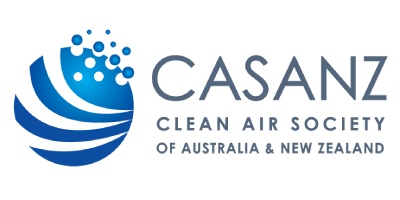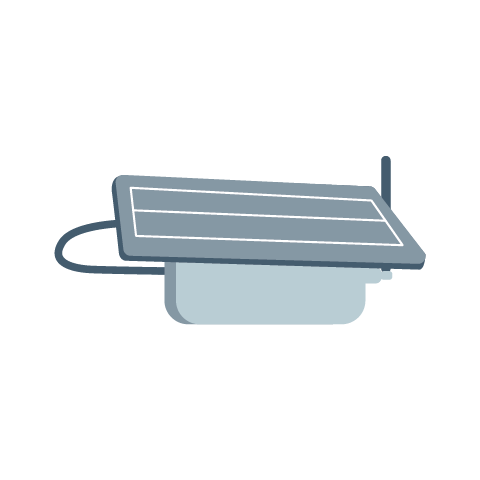Perth air quality: Is there a problem and what’s causing it?
Does Perth have an air pollution problem? The answer is a complex one, but it certainly isn’t a hard ‘no’.
The award-winning RAC Air Health Monitor is the biggest air sensor network in Australia. Powered by hundreds of sensors, showing hour-by-hour changes to the air quality across the metropolitan area. Helping move towards a future of cleaner transport.

The RAC Air Health Monitor was recognised as the winner of the 2023 Clean Air Society of Australia & New Zealand (CASANZ) WA Branch Clean Air Achievement Award.
The RAC Air Health Monitor won the 2024 Industry Excellence Award at the 2024 CASANZ Innovation and Excellence in Air Quality Awards. Find out more.
What we monitor
The RAC Air Health Monitor measures particulate matter (PM2.5 and PM10) and nitrogen dioxide (NO2).
The particles that make up PM can be emitted from a range of sources, including vehicles, building and industry, and dust. PM can be inhaled into the lungs and sometimes enter the bloodstream, impacting cardiovascular and respiratory systems.
Transport is a major source of NO2 in built-up areas. NO2 can cause serious health conditions, including irritation and inflammation of the respiratory system. Some studies suggest there may be links between NO2 exposure and heart problems, diabetes, adverse birth outcomes, and cancer.
How we monitor
We use an interactive model which blends air quality data from our sensor network with other sources, including near real time traffic data from Main Roads WA, and motor vehicle emissions modelling from Copert Australia.
The model also includes emissions data from the Department of Climate Change, Energy, the Environment and Water’s National Pollutant Inventory (NPI) database.
1-hour average |
||||||
|
Category |
Good |
Unhealthy for sensitive groups |
Unhealthy |
Very unhealthy |
Hazardous |
|
|
Colour |
|
|
|
|
|
|
|
PM2.5 (µg/m3) |
0-25 |
25-50 |
50-100 |
100-300 |
300+ |
|
|
PM10 (µg/m3) |
0-50 |
50-100 |
100-200 |
200-600 |
600+ |
|
|
NO2 (ppb) |
0-40 |
40-80 |
80-120 |
120-180 |
180+ |
|
24-hour average |
||||||
|
Category |
Good |
Unhealthy for sensitive groups |
Unhealthy |
Very unhealthy |
Hazardous |
|
|
Colour |
|
|
|
|
|
|
|
PM2.5 (µg/m3) |
0-15 |
15-25 |
25-50 |
50-150 |
150+ |
|
|
PM10 (µg/m3) |
0-25 |
25-50 |
50-100 |
100-300 |
300+ |
|
|
NO2 (ppb) |
0-13 |
13-40 |
40-60 |
60-90 |
90+ |
|
Annual average |
||||||
|
Category |
Good |
Unhealthy for sensitive groups |
Unhealthy |
Very unhealthy |
Hazardous |
|
|
Colour |
|
|
|
|
|
|
|
PM2.5 (µg/m3) |
0-5 |
5-8 |
8-15 |
15-45 |
45+ |
|
|
PM10 (µg/m3) |
0-8 |
8-25 |
25-30 |
30-90 |
90+ |
|
|
NO2 (ppb) |
0-5 |
5-15 |
15-20 |
20-30 |
30+ |
|
The RAC Air Health Monitor Index was last updated on 5, June 2024 following an independent review to better align with international and local environmental standards (RAC also commissioned an initial independent review in 2022, to ensure the appropriateness of the initial Index). These changes also allow the community to easily understand and to respond to air quality in their area.
Find out more about how our air health is rated.

200 sensors deployed

PM2.5, PM10 and NO2

Air pollution occurs when the air contains substances that impact and cause harm to humans, animals and the environment. Air pollution can contain a mixture of tiny particles, liquids or gases. Extracting and burning fossil fuels (oil, gas, and coal) is the major source of greenhouse gases and air pollution1. Air pollution is caused by:
In major cities across Australia, one of the main sources of air pollution is from motor vehicle emissions, caused by diesel and petroleum combustion2.
1 NSW Environmental protection agency. About air pollution. Accessed at https://www.epa.nsw.gov.au/your-environment/air/air-nsw-overview/about-air-pollution
2 Better health (Vic), Air pollution. Accessed at https://www.betterhealth.vic.gov.au/health/healthyliving/air-pollution
Our Vision 2030 is for a safer, sustainable and connected future for Western Australians. To create a more sustainable future, we must eliminate harmful vehicle emissions, so current and future generations can enjoy healthier and cleaner air.
RAC have set ambitious targets for 2030, with social impact metrics which measure and track progress toward these:
The RAC Air Health Monitor is powered by a network of sensors, along with input from real-time traffic emission, meteorology and industrial activity which provides air quality data to the Perth community about the air they breathe and the impact of vehicle emissions on their everyday lives.
We use an interactive model which blends air quality data from our sensor network with other sources, including near real time traffic data from Main Roads WA, and motor vehicle emissions modelling from Copert Australia.
Local air pollution and health experts led by Professor Gavin Pereira from Curtin School of Population Health, Curtin University as part of the Planning and Transport Research Centre (PATREC) have provided support of the RAC Air Health Monitor through an independent review.
Watch the below video and hear from the team at RAC, Clarity and wider stakeholders who have been involved in the RAC Air Health Monitor so far.